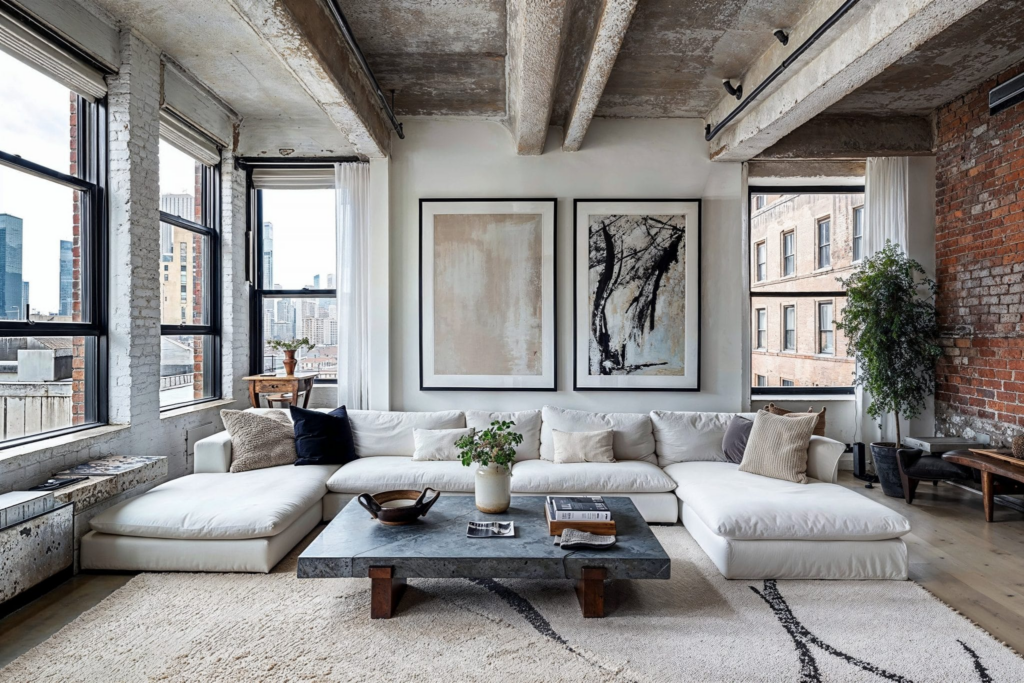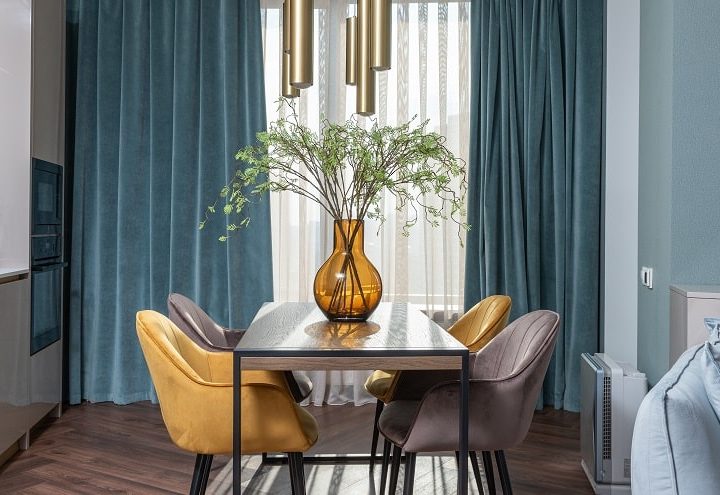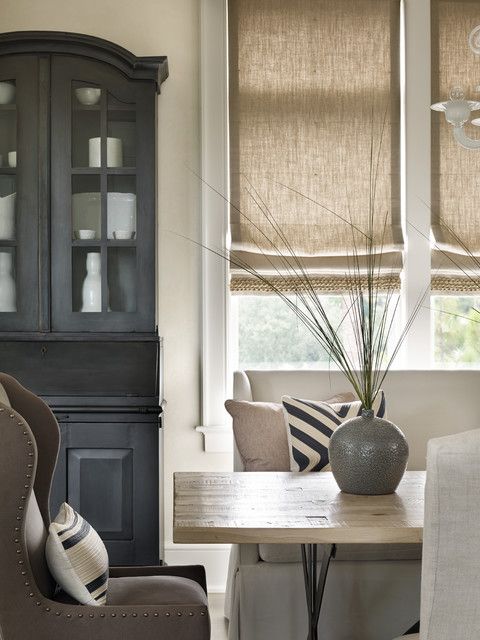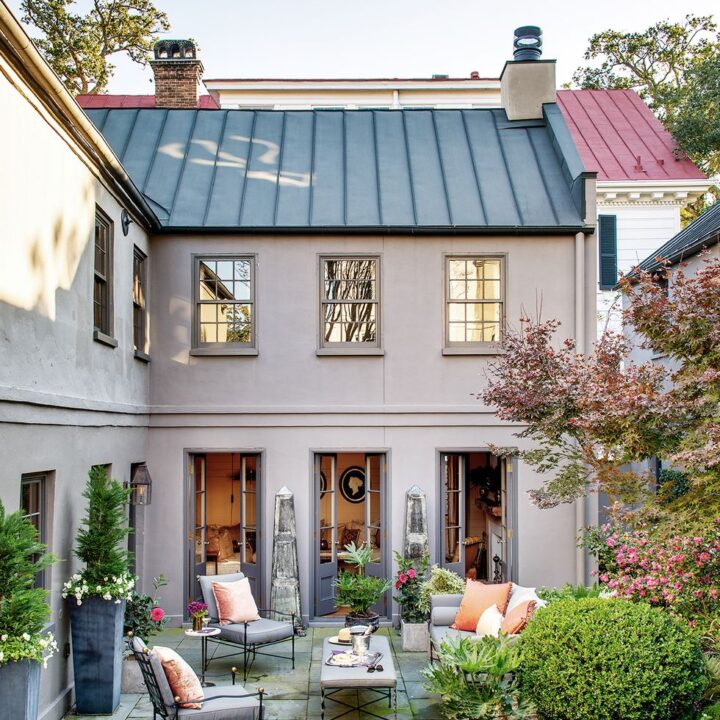Spiffy Speak
INDUSTRIAL INTERIOR DESIGN STYLE: KEY ARCHITECTURAL & AESTHETIC FEATURES

Merging raw aesthetics with urban sophistication, the industrial interior design style offers a unique take on home decor that is practical, authentic and rooted in history. Brought about by the repurposing of old vacant factories into residential buildings due to rapid urbanization, the industrial aesthetic was quite literally born in a factory! Therefore, it curates simple elegance with rustic elements, raw finishes, clean lines and minimal details, that ultimately led to it crossing borders to non-industrial complexes and eventually to suburban and rural homes.
Heavily influenced by the German Bauhaus movement and Modern Minimalism movement, the style bears traces of Scandinavian, midcentury modern and farmhouse design styles, making a rare and unique blend of rustic and modern aesthetics. In a contemporary home, the industrial theme is carefully carried through the furniture, fixtures and decor components. Not short of softening elements that make the space look more like ‘a home’, the style unapologetically maintains its masculine overtones. This beautiful amalgam of the rustic and the modern, the hardy and the delicate, and the rugged and the homely is tangibly expressed through these touchstone features of every industrial-style home:
Authentic and Sustainable Architectural Materials
Since the industrial style’s origins lie in the re-imagination of factories, warehouses and workers’ residences, the architecture comprises of utilitarian hardwearing materials like stone, wood, metal and concrete. The workshop-ish ambiance is forged by exhibiting these materials in their raw state as they would be done in a busy factory fulfilling its utility-oriented approach and mandatory safety requirements. So, industrial-style homes often feature wood flaunting its striations, exposed brick walls showing off their irregular grout lines and concrete floors glorying in their patina. Metals like aluminum, iron, steel, copper and tin exhibit natural hues and finishes. While the options to cover them up with heavy coats of plaster, paint or overtreatments abound, industrial design chooses to weave its aesthetic around this unadorned unfinished look.
Open and Light-Welcoming
Throwing back to the soaring ceilings, expansive loft spaces and floor-to-ceiling fenestration of factories and stockrooms, industrial design adopts an aesthetic that is open, airy and welcoming of light. This is often executed by embracing the open-plan layout and installing large picture windows and doors in new builds. Where the architecture does not carry legacy industrial leanings, this openness is brought about by maintaining a streamlined approach to decor and leaving the windows bare for maximizing incoming light, wherever privacy is not a concern.
Exposed Ductwork and Conduit
The industrial design seeks to weave its aesthetic around the structural features of manufacturing units. This is explicit in the way it treats the not-so-see-worthy elements like ductwork and pipelines. While most decor styles focus on hiding them away behind bulkheads, rafters or any type of overtreatment, the industrial style relies on these elements to incorporate character and personality into the home. Revealing the infrastructure of the house, exposed ductwork and conduit beautifully carry forward the theme of raw elegance. Wherever it is not possible to peel back the layers and expose these structural elements, faux additions come to the rescue to stay true to the style. Exposed ductwork and conduit is just another way that the industrial decor style plays out its unfinished look and candidly showcases its love for unpretentiousness, practicality and ruggedness. It clearly does not believe in ‘cover-ups’!
An Earthy Palette
Featuring natural materials and keeping them exposed in their original state, industrial homes unsurprisingly portray a neutral color scheme of grey, brown, black and warm white. The palette tends towards darker moody colors rather than bright or pastel-y, infusing a masculine flavor into the overall scheme. However, it is gladly interrupted by the reflective finishes of metal and glass. And designers who see an aesthetic opportunity in this moody ambiance, introduce bold accents like red and orange in their saturated versions for their high contrast and gush of energy. These pops of color add a moment of cheer and visual warmth to a space that is otherwise dominated by cool hues and almost bordering on the risk of going too gloomy or lackluster.
Clean Lined Sharp-Edged Silhouettes
Be it architecture, furnishings or decor, industrial design leans towards streamlined profiles and avoids fluff and embellishment intentionally. The sophistication and urban charm of this style are largely elicited through this explicit leaning toward minimalist home decor. So, for example, tables may feature metal hairpin legs or sleek rectangular wooden legs rather than Chippendale-style clawfoot or ornate details. The curves of crescent couches and winged back chairs are out of place here, but boxy sectionals are welcome because of their clean profiles. Similarly, instead of sinuous patterns like florals and damasks, stripes and plaids are preferred for their straight lines, and yet, even these are kept to a minimum. Sparing use and sometimes the total evasion of pattern play contribute to maintaining the clean-lined aesthetics and uncluttered visual appeal of the industrial style.
Industrial Light Fixtures
During the origin of the industrial style in remodeled factories, designers saw a huge aesthetic opportunity in the factories’ towering ceilings and introduced oversized light fixtures that also furthered the essential traits of the style. This dramatic feat has since come to be one of the touchstone traits and most appreciated element of this otherwise unembellished style. Typically built of metal and recycled glass, a single colossal chandelier or an ensemble of several pendant lights glowing with warm light act as signature showstoppers of formal rooms. In addition to that, light fixtures placed in key areas illuminate and draw attention to the unique architectural elements of the space. Metal shade lamps, naked light bulbs, and black metal caged lights often supported with rough-sawn timber planks and metal chains paint the space with both warm lambency and industrial charm.
Vintage and Repurposed Elements
Deeply in love and happily married to history, the industrial design loves to integrate base materials and items that once held key roles in factories and workers’ apartments. This includes integrating the salvaged architectural fragments in their original state or recycled forms. So, for example, recycled timber floorboards from closed manufacturing units may be seen adorning the floors of a newly-built industrial home to take advantage of its rich personality and to let it speak its story. Workroom lockers with their rust and dents, old leather bags wearing tatters, vintage wall clocks that literally take us back in time, metal trunks that speak of a journey away from beloved home for a promising livelihood, and old industrial signage that were once proud announcers – all breathe in the essence of the style. And those who cannot boast of such precious finds will never fail to find their muse in thrift stores and flea markets.
Textured Rugs and Natural Textiles
The brawny and understated elements of industrial decor are counterbalanced with thoughtfully selected fabric accessories to soften the space and offer a homely, approachable feel. Area rugs play a significant role in this regard, offering color, texture and softness that is not just visual but also experiential. Long curtains, with their rippled silhouettes, soften down the raw features of the walls and the squarish shapes of the windows, while still staying committed to the core values of the style in its solid taupe, grey or charcoal tones. Upholstery, pillows and throws are other opportunities that are made full use of without going overboard with color or pattern. Instead, texture is the coronated star of this style and fabrics bring them to the home in beautiful and varied ways. Chunky wool, sandy sisal, nubby linen, supple leather and knobbly burlap or realistic imitations of these find a rightful place in industrial home decor.
Bold Graphic Art Work
The industrial design lays out a dark canvas on which creativity can find expression in all its bold and intriguing forms. Large abstract paintings, often bringing in a strong dose of color or a captivating theme infuse life into the space and act as focal points. Industry-inspired artwork, framed photographs of bygone manufacturing units, salvaged mechanical gears, vintage factory posters and even old bikes and musical instruments get prominent places on the walls, offering glimpses into history and strewing light-hearted moments all along.
Punctuations of Greens
The cold hardy materials, unceremonious profiles and subdued palette of industrial design call for elements that can offer contrast with their organic shapes and tenderness. And that role is best played by plants, accentuating the softness and contrast brought in through textiles and artwork. Plants featuring large foliage and often scaling up to eye level and beyond pepper the space. Mantles, coffee tables and sideboards double up as display platforms for small and medium-sized topiaries, succulents, and vines. Their lively energy and verdure could not get a better place to shine than the brooding dark spaces of an industrial home.
Embrace the Rustic Chic of the Industrial Design Style
A half-plastered wall with exposed concrete beams on the ceiling may not sound like the ideal canvas to begin with. But an industrial decor enthusiast plops an antique clock on that wall, places a plush tufted leather couch below it, displays vintage finds on a black pipe etagere, adds a dose of fresh green with potted plants and calls it a living room! What seemed like an underdone build is now a space where history, nature and urban themes converge. And that is the remarkable potential and unique achievement of the industrial design style that weaves its aesthetic of simple sophistication while holding strongly to industrial motifs and a bygone era. Whether you live in the countryside, aloof in a forest or a bustling metropolis, leaning into the industrial aesthetic, moderately, if not substantially, is easy once you know the salient features that give this style its distinct identity. And, we hope that this blog has paved the way for you to start that exciting journey of embracing the untamed refinement and earthy elegance of the industrial design style.
READ MORE: EMBRACING RUSTIC DECOR TO CREATE A WARM & INVITING HOME














